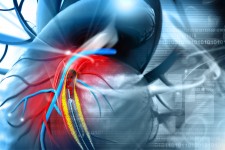
Orange County, California, May 13, 2016 (Newswire.com) - We only have four heart valves. That’s it. Four valves that are tasked with maintaining perfect blood flow so that we may stay alive. But they’re susceptible to failure, and for a number of reasons including birth defects, stenosis, regurgitation, endocarditis, among other possible complications.
Though medications can provide relief in less serious instances, some cases require open heart surgery. Most often, it is the aortic and mitral valves that are problematic. Regardless of the valve, however, all of them can be handled with artificial heart valve implants. Depending on what is at issue, a patient will receive either a mechanical or biological valve. With the proper treatment, most people fully recover and add many years to their lives.
"Since many modalities require entire system upgrades, the cost for higher resolution can be out of reach for many providers. However, Modalixx's smart engineering ensures that it can connect to any already existing modality."
Jamie Nguyen, Sr. Communications Specialist at Ampronix
Earlier this month, the European Association of Cardiovascular Imaging (EACVI) passed recommendations that specify a series of medical imaging techniques for patients experiencing complications with prosthetic heart valves. The guidelines include tables that are aimed at helping doctors identify and classify possible obstructions and issues.
Overall, there are six potential imaging techniques to employ in the set of guidelines. After the recommendations were published in European Heart Journal, these guidelines were endorsed by various international organizations such as the Chinese Society of Echocardiography, the Inter-American Society of Echocardiography, and the Brazilian Department of Cardiovascular Imaging.
If a defection is suspected, the first step is to perform a 2D transthoracic echocardiography (TTE) as a basic standard procedure. If more clarity is needed, the next imaging technique suggested is a 2D and 3D transesophageal echocardiography (TOE) to complete the noninvasive evaluation.
A prosthetic heart valve malfunction can result in death, so taking as many precautions as possible to safely rule out a bad valve is the optimal choice to achieve desired patient outcome.
Both the TTE and TOE can be performed with a specialized ultrasound. A Chison I9, can easily facilitate all recommended imaging techniques on one device. The versatile system has a 19 inch HD LED monitor and a 10 inch touch screen for better workflow. With the option of 2D or 3D images and an integrated gel warmer, it eases the ultrasound process for the patient and medical practitioner alike.
If for any reason the TTE and TOE results are inconclusive, the next procedure outlined by the European group is a cineflouroscopy, which checks the disc mobility and valve ring structure for thrombosis—a rare complication commonly associated with mechanical prostheses. To perform this, physicians take multiple photos during x-ray and compile them into a moving picture.
A c-arm is necessary to perform the series of x-rays, which then are displayed before radiologists for diagnoses. The Modalixx G202MG can advance expeditious interpretation time for medical imaging professionals due to its high resolution and user-friend OSD. Many healthcare providers still use CRTs with their c-arms, which can result in radiologists missing potentially life-endangering, crucial details.
"Since many modalities require entire system upgrades, the cost for higher resolution can be out of reach for many providers. However, Modalixx’s smart engineering ensures that it can connect to any already existing modality." Jamie Nguyen - Sr. Communications Specialist at Ampronix
If more information is needed to examine the extent of potential complications, then a cardiac computed tomography (CT) is counseled. A CT is helpful when looking for calcification, degeneration, pannus formations and blood clots. Additionally, it can also help with looking for discs in mechanical valves.
The last step in the series of recommendations involves a cardiac MRI to assess for valve function and regurgitation. Details previously unseen with the prior imaging techniques may very well be found with this full imaging technique. However, comprehensive imaging necessarily entails utilizing a suitable display module so the radiologist can accurately diagnose defective valves. The Modalixx GC8 is a fitting companion to MRIs with its high resolution and high bright resolution. The color display autosyncs to any existing modality and features low power consumption.
According to the guidelines, multimodality imaging is necessary in order to scan for all potential threats that may occur with a bunk artificial valve. Since each imaging test, on its own, has the potential to miss a host of factors, an integrative approach is the best one to prevent unnecessary death from valve failure.
Contact Ampronix:
International Sales: +1 949-273-8000
Domestic Sales: 1800-400-7972 for US and Canada
Email: info@ampronix.com or Contact Us Here
View Ampronix's Product Catalog
Follow Us:
About Ampronix
Ampronix is a renowned authorized reseller of the medical industry's top brands as well as a world class manufacturer of innovative technology. Since 1982, Ampronix has been dedicated to meeting the growing needs of the medical community with its extensive product knowledge, outstanding service, and state-of-the-art repair facility. Ampronix prides itself on its ability to offer tailored, one-stop solutions at a faster and more cost effective rate than other manufacturers. Ampronix is ISO 13485:2003, ISO 9001:2008, and ANSI/ESD S20.20-2007 registered and certified.
Source: www.Ampronix.com
Share:








